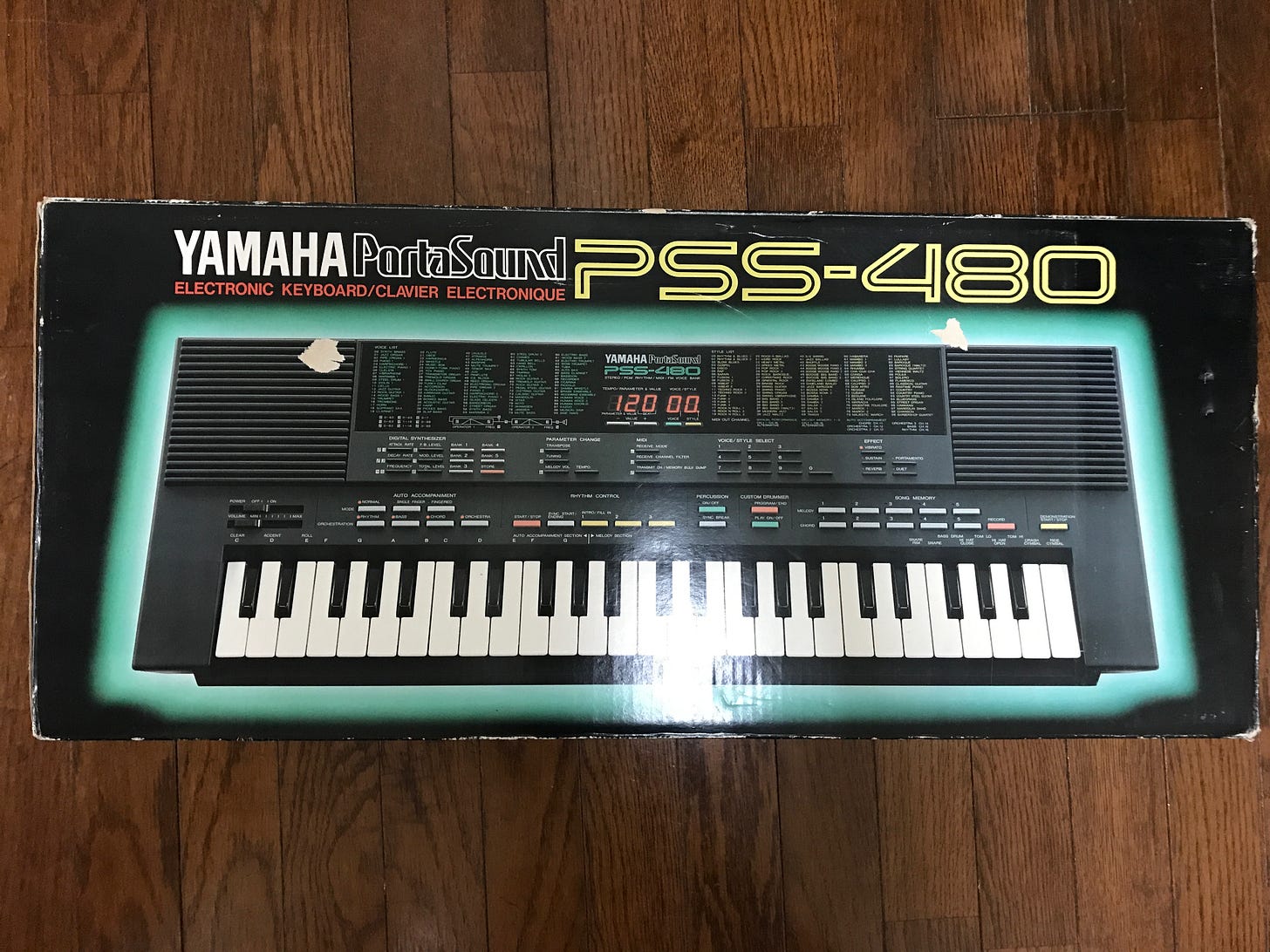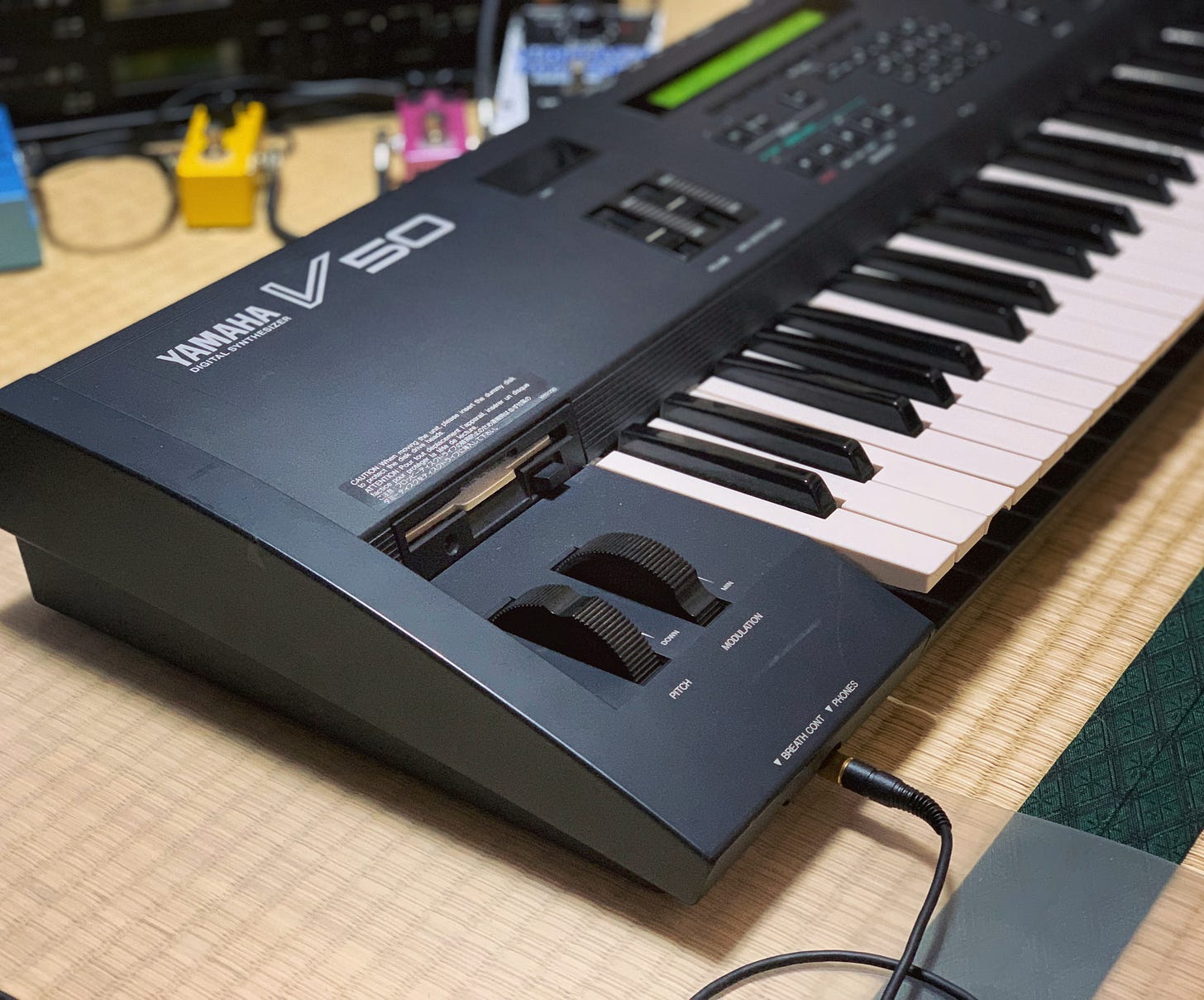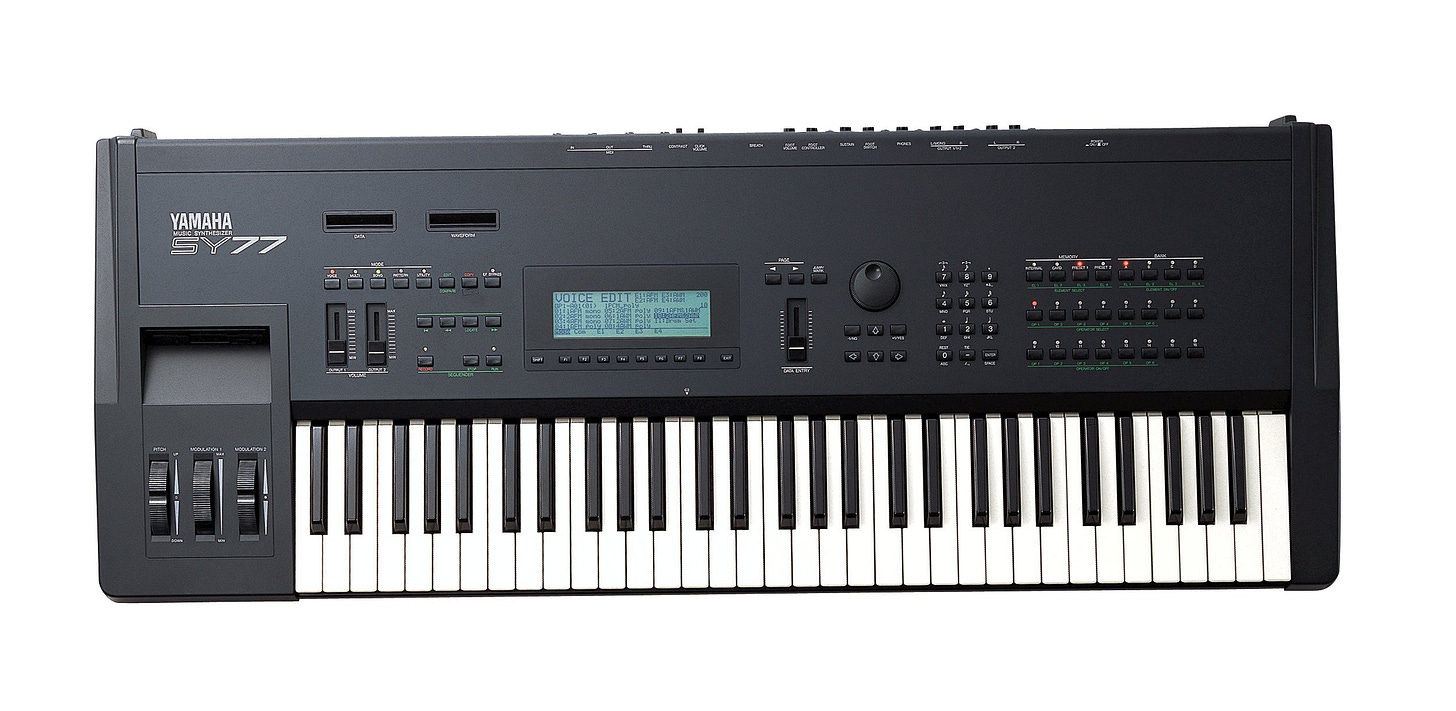Lost In The Dream: The Beauty Of Yamaha’s Forgotten FM Synths
There’s more to Yamaha and FM than the DX series. I open the aperture and shine some light on the company’s all-but-forgotten late-period FM synthesizers.
When it comes to synthesizers, Yamaha is largely synonymous with FM. Thanks to the world-beating DX7 and the many DX models that followed, you can’t say frequency modulation without also thinking of Yamaha. And even when a non-Yamaha company released an FM synth, because of licensing agreements Yamaha was always somehow involved. For a few years in the mid-‘80s, Yamaha’s FM instruments were all anyone wanted. But as the decade progressed, and other forms of synthesis began to supplant FM as the sound engine of choice, the company dug in its heels and kept on releasing FM-based instruments to ever-diminishing returns.
Ever-diminishing? Yes but to an extent. Yamaha didn’t go out of business by clinging to FM after everyone else had moved on to sample-based synthesis. The story is a little more complicated than that. It’s also not fair to say that the instruments from this period were failures. They weren’t, and in fact, they’re some of my favorite FM synths from any era. There’s a unique appeal to them, a kind of gravitational pull that’s a combination of experimentation, simplification, and some frankly odd (unique?) decisions. They’re also extremely affordable on the second-hand market, which makes them all the more attractive.
Doing Things Differently
Yamaha is an old company. It was originally formed in 1887 to make reed organs and is now the world’s largest musical instrument company. Its scale is vast and the synthesizer division is just one small part of a very large outfit. Unlike Korg or even Roland (especially the Roland of the ‘80s), the company’s fate isn’t tied to the success of a single instrument.
Yamaha also did things differently than the other Japanese companies when it came to synthesizers. Because of their already long history (and not to mention deep pockets), they could afford to spend a long time in research and development. They would then release a very expensive and rare unicorn-like instrument, from which other instruments could be spun off of. This was true in the 1970s with its polyphonic analog range (from the GX-1 to the CS80) and in the 1980s with FM.
The California Connection
FM, or frequency modulation, was developed by John Chowning at Stanford University in Palo Alto, California in the 1960s. Yamaha saw the potential in the new digital form of synthesis and licensed it from Stanford in 1973, making it an exclusive deal in 1975. It soon developed its own variation on the synthesis, patenting it and developing a prototype instrument a year later. By 1980, it had released the 88-key GS-1, one of the first widely available FM synthesizers. Like the GX-1 before it, it was a beast of a machine, looking more like a piano than what we think a synthesizer should look like. It wasn’t a hit but the next one would be.
Released three years later, the DX7 was massive. It sold 200,000 units in its first three years, many more than any synthesizer up to that point. One reason for the instrument’s success was its affordable price and this was partly achieved by Yamaha designing and manufacturing its own chips. While most synthesizer companies used off-the-shelf chips for their instruments, Yamaha could make their own. Being able to put FM on a chip also greatly expanded the company’s reach. The sound synthesis engine could now be used in more than just musical instruments: it could go into computers (third-party as well as the company’s own), video game systems like the Sega Mega Drive/Genesis, and sound cards. So many sound cards.
The Chips
Even when FM as a popular synthesis engine for synthesizers was on the wane, the company was still basically printing money through its lucrative chip business. “We need to remember that in the early-‘80s, Yamaha was the second largest company for in-house production and consumption of integrated circuits after IBM.” That’s Yamaha expert Alberto of the amazing online resource, Yamaha Black Boxes, explaining why Yamaha stayed with FM for so long. “Producing chips was a key part of their business, for their musical instruments and to be integrated in third-party sound cards and game consoles. The partnership with (sound card manufacturer) AdLib kept Yamaha’s integrated circuits relevant at least until the late 1990s.”
It makes sense. You already have an abundance of self-made chips so why not use them? Alberto continues: “From a business point of view it’s clear that you want to continue to profit (on) the big investments made for the chip factories by repackaging the same piece of silicon capable of FM synthesis into as many objects as possible.”
The Brand Issue
There was another facet to keep in mind. FM was the company’s brand, its identity. Yes, New England Digital Corporation beat Yamaha to market with the Synclavier but it was expensive and thus niche (and also part of a licensing deal with Yamaha). Even Korg’s FM-based DS-8 and 707 synths were the results of a business merger with Yamaha. “Frequency modulation became part of the Yamaha brand,” explains Alberto. “Other manufacturers (especially Roland) could adapt much more quickly to market trends because they never had a cohesive identity.” Even when they did eventually start introducing new synthesis forms they did so as part of a package with FM. “At Yamaha,” says Alberto, “experimenting (with) new types of synthesis alongside FM was likely a safe choice not to upset fans.”
The Bubble
Something else to consider is that many of the FM-based instruments that Yamaha released in the late-‘80s were aimed at the home market, or at the very least the prosumer. These were simplified versions of more complex pro synths or outright consumer-level keyboards sold in electronics chain stores. There were arguably a lot more people buying instruments for the home than for studios.
This was also the Bubble Era in Japan when the economy was booming and people had more money than they knew what to do with. There are stories of parents buying DX7s and Juno-106s for their kids to play with at home. Yamaha’s EOS series of home keyboards was especially popular with young Japanese women and teenagers. The company’s bottom line surely benefitted from this economic boom. And, as I discovered when writing about Japanese innovations in electronics for Attack Magazine, Japanese companies of the time were trying to please their domestic customers first. Global success came as a result of success at home.
The Post-DX Experience
Yamaha’s DX-branded synths, from the original DX7 to the final DX11, had a largely uniform look. Sleek and modern, like slabs of metal, they were as visually striking as they were digital sounding. Yamaha’s late-‘80s instruments, however, are all over the place visually. The company was clearly casting around for something different, a new way to make its FM synthesis engine palatable to a new generation of players.
The most striking of the post-DX era was the YS200. Released in 1988, the four-operator, eight-voice machine took a DX11 (or V2 in Japan), added an eight-track sequencer (making it Yamaha’s first workstation), made it multitimbral, and threw in some effects algorithms, likely taken from Yamaha’s line of affordable digital effects processors. As with many of the other instruments from this period, it made editing easier (read: simpler) and thus more approachable for non-professional players. It was (and still is!) visually striking, with a design supposedly done by the famous design house, Frog. It’s almost worth it to own one just for the looks alone. Check out the answering machine-like module version, the TQ5, for more unusual Frog styling.
If you like the idea of a TX81Z sound engine in an easy-to-edit keyboard package but can’t get on board with the YS200’s looks, try the DS55 (1988). It’s got the same, beautiful sound but in a more traditional body design, although one that straddles the pro and home markets in styling.
Speaking of the home market, one of my favorite of Yamaha’s late FM instruments is the PortaSound PSS-480. This 1988 instrument has the usual Casio-like extras such as rhythms and accompaniment, but it’s also got a very noisy two-operator FM engine that you can edit with sliders. It’s perfect for techno, noise or other challenging genres. It’s even got MIDI.
In 1989, Yamaha repurposed the TX81Z chip once again in the V50, a workstation with 16-voice polyphony, double effects engine, a drum machine, a sequencer and even a floppy drive for saving sequences and patches. Very late ‘80s. I have one and I love it for the effects, to be honest. Every preset patch is absolutely drenched in noisy, digital reverb and it’s glorious. Although the look of the machine was very different from anything that came before, the next release would echo its curves.
That same year, Yamaha released a new flagship synth, one that finally began to think about a world beyond the pile of FM chips in the company’s warehouse. This was, of course, the SY77. It offered a slightly more advanced form of FM synthesis, called AFM, with 45 algorithms, three feedback loops and 16 waveforms to rub together. Sample synthesis was all the rage, with Roland’s D-50 and Korg’s M1 synths already incredibly popular. Yamaha took a page from their book and added its own sample synthesis engine, AWM2, for mixing with the FM. It’s a lovely instrument. Indeed, Yamaha thinks enough of it to put it out with a CS-80, DX1 VP1 for playing at Innovation Road, the museum at their Hamamatsu headquarters
.
In 1990, the company debuted a new instrument with a new kind of synthesis (at least for Yamaha) that also made use of FM. This was the Dave Smith-associated SY22, a vector synthesizer with a joystick for crossfading between two sampled sounds and two—you guessed it—FM ones. It’s a unique synth with a sound all of its own. If you can find one cheap, it’s definitely worth it. Even better is the TG33, the tabletop version that looks like a closed-circuit camera control unit.
Within a few years, Yamaha had finally moved on from FM and embraced sample synthesis, although it did make a brief encore in 1998 with the FS1R. A rackmount synth with eight operators plus a new digital engine called Formant Shaping Synthesis, it, unfortunately, failed to set the world on fire. “To me, it sounded thin and harsh, even when loading DX7 patches that I knew were rich and punchy,” laments Alberto. It’s found a modern audience though, with second-hand prices continuing to rise.
Stanford’s patent on FM expired in 1995, opening the floodgates for synthesizer manufacturers to release their own FM instruments. The digital synthesis architecture is now appreciated for what it is, sitting proudly alongside all of the other forms of synthesis in the modern studio context. And while you’re enjoying your Digitone and opsix, don’t forget about Yamaha’s forgotten and unloved instruments from the post-DX era. They may not be as complex but they’re still a lot of fun and sound just as great.










